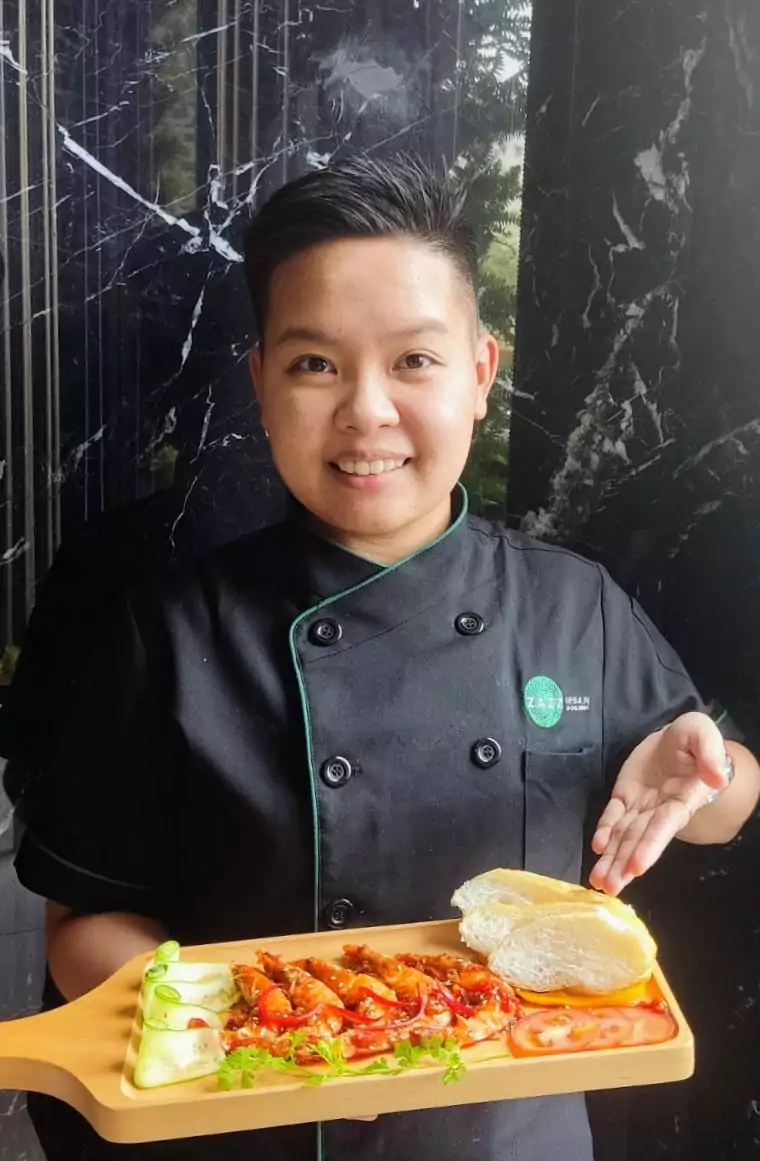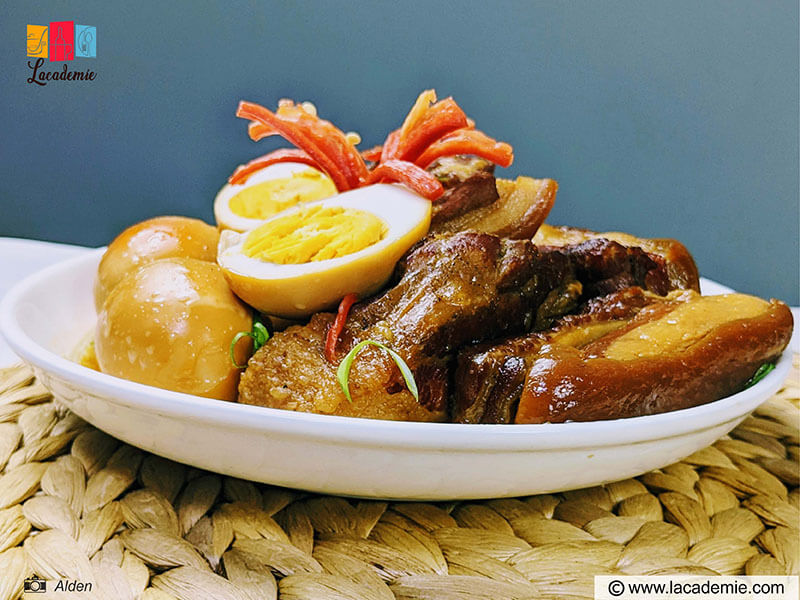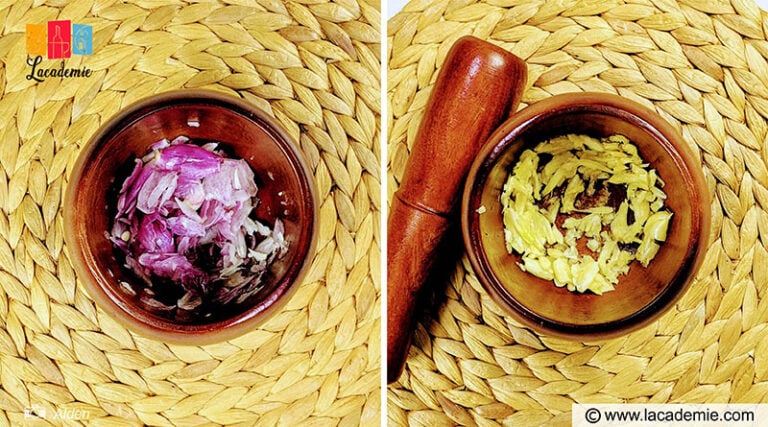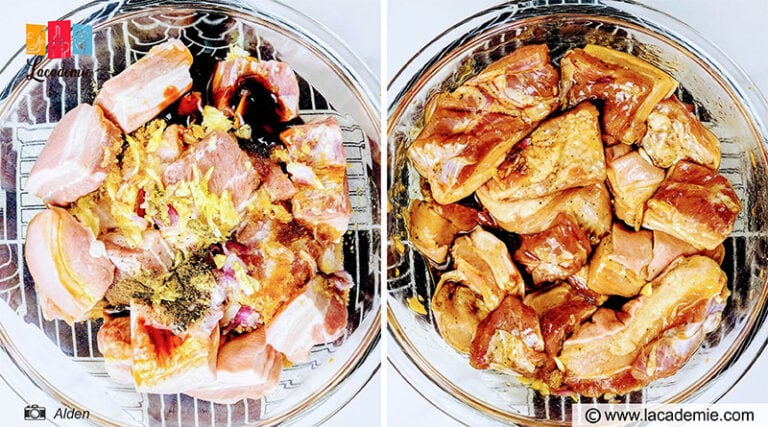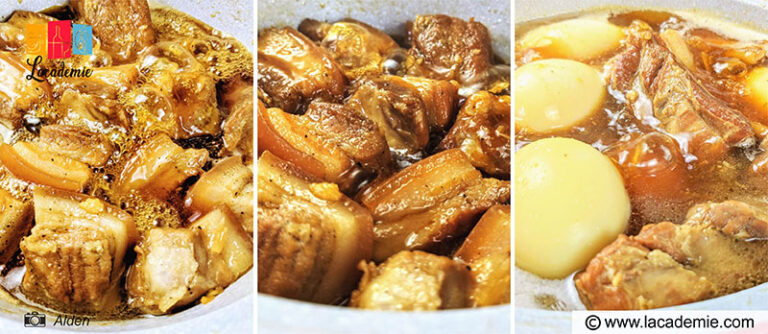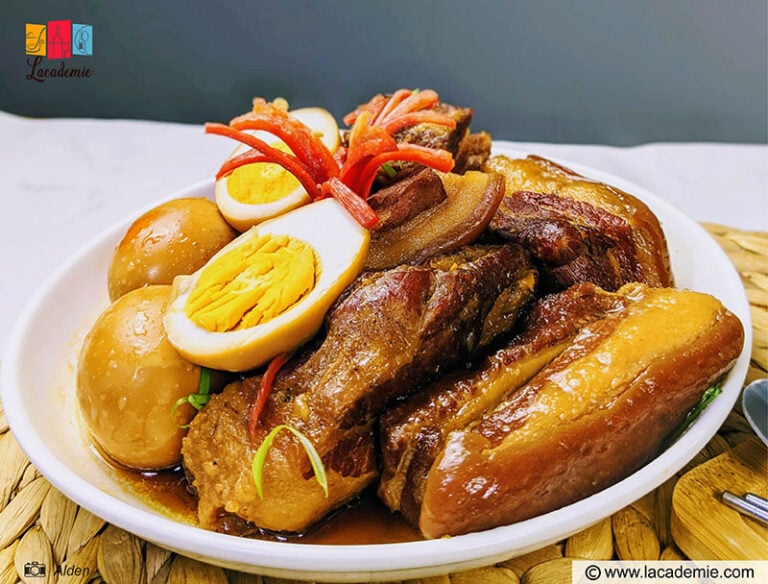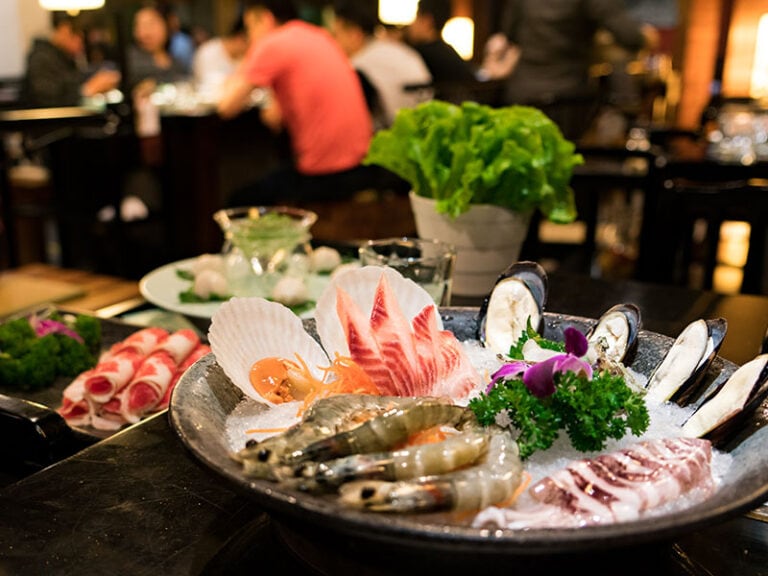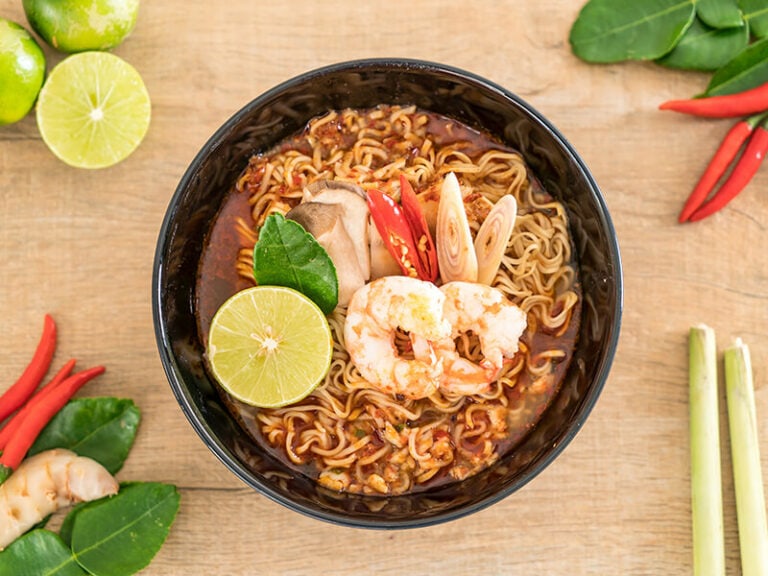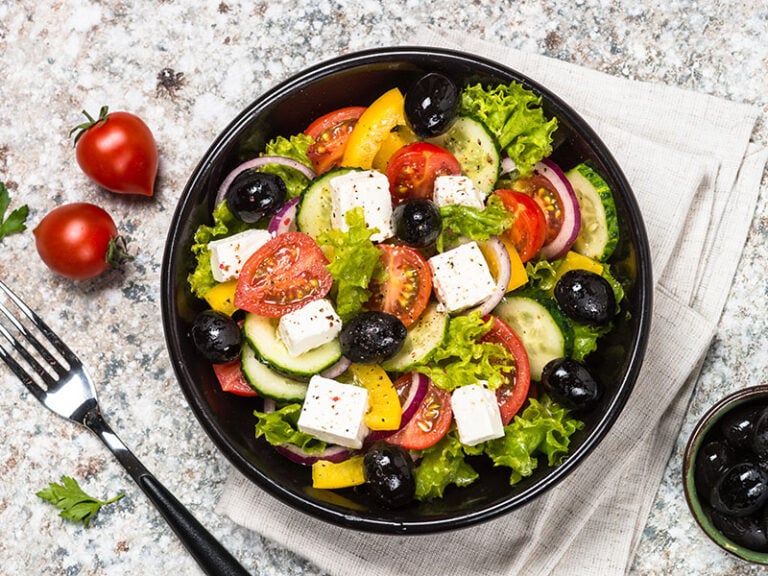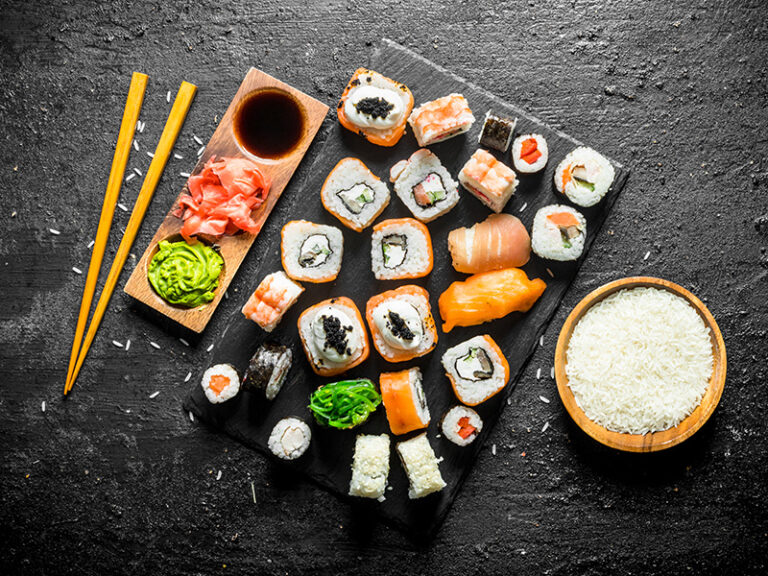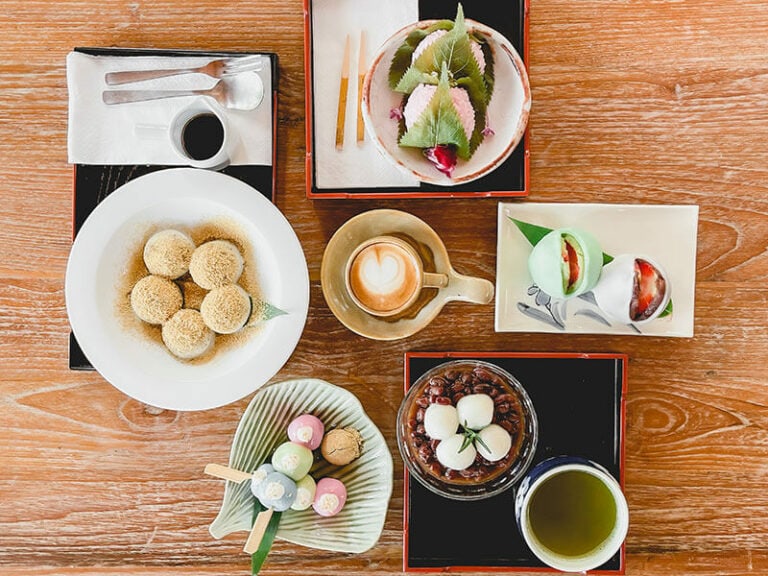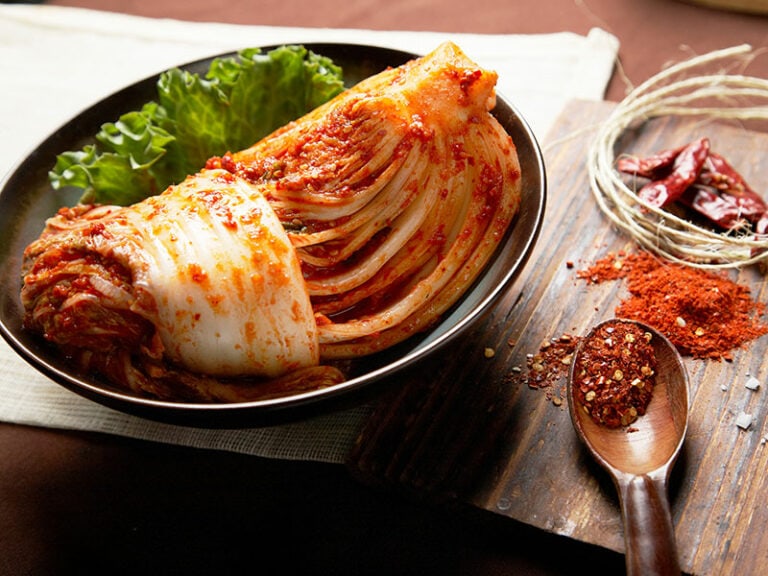Vietnamese caramelized pork belly or “Thịt Kho Tàu” is a popular dish in the Southern part of Vietnam. The pork belly is braised until fork tender and infused with a delightful sweet-savory taste from coconut milk, sugar, fish sauce, and other spices.
If you’re looking for an impressive Asian dish for your everyday meal, Thit Kho Tau is a perfect choice. With the help of today’s recipe, you’ll have no trouble recreating this classic Vietnamese comfort food at home!
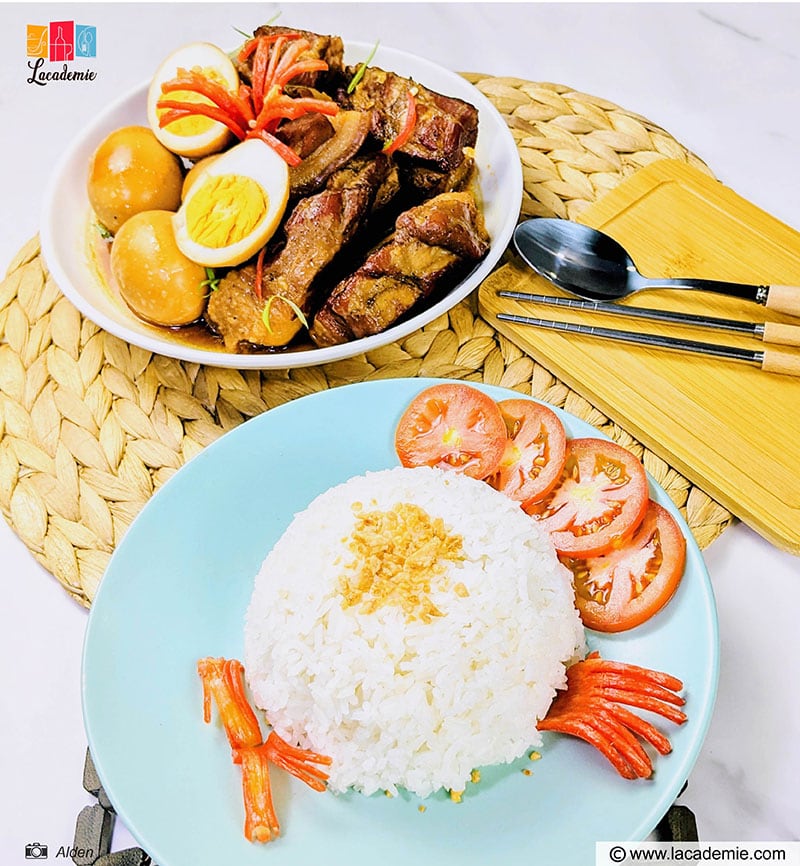
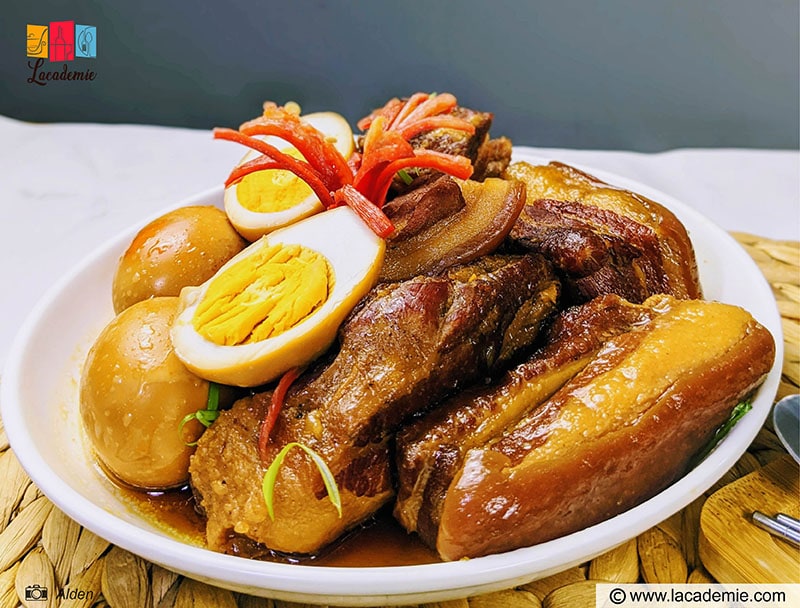
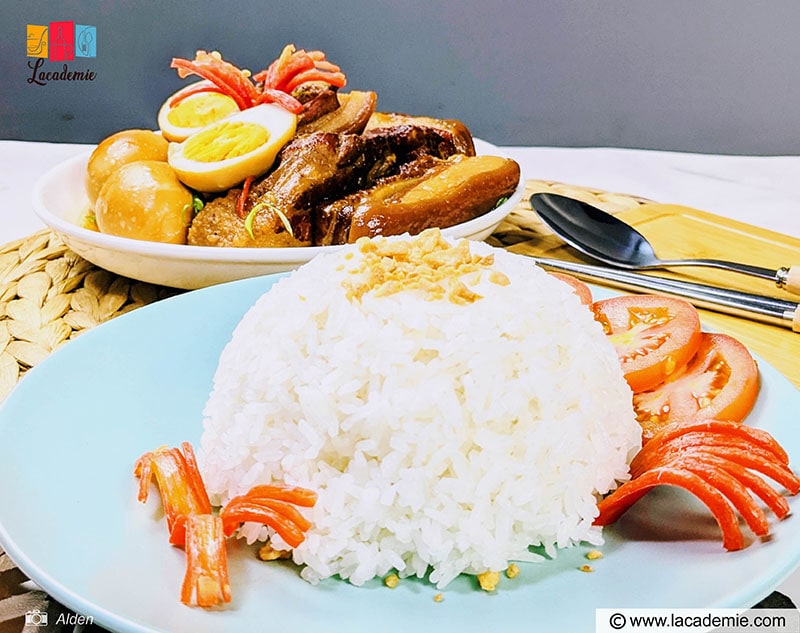
Thit Kho Tau – A Must-Try Vietnamese Delicacy
“Thịt Kho Tàu” is a traditional Vietnamese delicacy that’s especially well-loved in the country’s Southern region. The Southerners consider it a must-have during the Tet holiday (Lunar New Year celebration). People also serve it as a convenient dish for daily meals.
The dish usually includes chunks of pork belly (or pork shoulder), boiled eggs, coconut water, fish sauce, sugar, pepper, and other condiments. Some households replace regular eggs with quail eggs or add bamboo shoots to the mix.
As for the meaning of the name, “Tàu” is a word of Mekong Delta origin that describes a “half sweet, half savory” flavor. Another theory is that it used to be a typical dish for sailors. Thus they name it “Tàu”, meaning “a ship” in Vietnamese.
Although people living in the Northern region also enjoy this treat, they’ve made some slight alterations to it. For example, Northerners often omit eggs and coconut water, two essential ingredients in the Southern version.
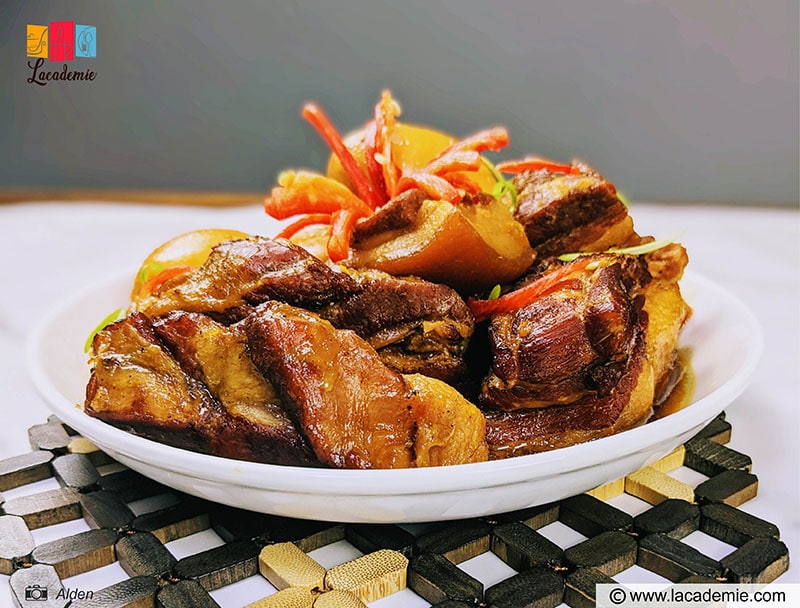
Tools
Thit Kho Tau is essentially a braised dish, and like most other recipes in this category, it doesn’t require any complicated kitchen tools.
- Mortar and pestle: For crushing the garlic and shallots.
- Pot: Make sure to choose a large enough pot for the pork belly and liquid ingredients.
- Ladle: For spooning out the braised pork.
- Medium-sized wooden spoon: For stirring the meat and spices.
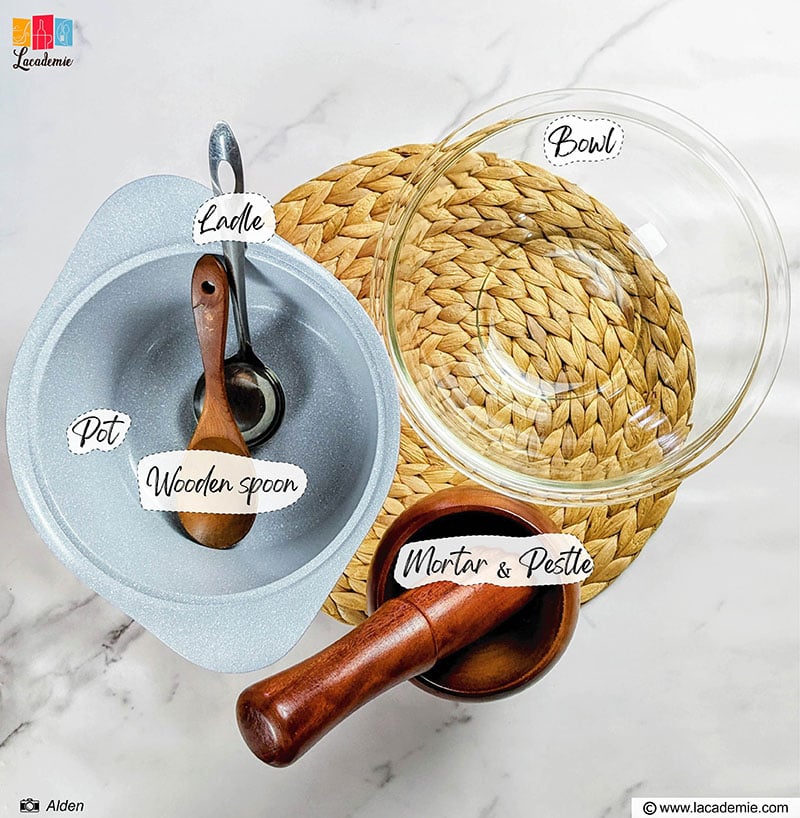
Ingredients
Since this is the recipe for the Southern version of Thit Kho Tau, besides the pork belly, you’ll need to prepare coconut water and boiled eggs.
- Pork belly: You can also use pork shoulder if you prefer more meat than fat.
- Eggs: Chicken, duck, or even quail eggs are all great choices. Remember to boil them in advance.
- Coconut water: Provides light and refreshing sweetness to the dish. Don’t mistake it for coconut milk!
- Water: Plain water will balance out the broth since too much coconut water can make the dish overly sweet.
- Chili pepper: For garnishing or marinating if you like spicy food.
- Oyster sauce: Salty, sweet, and umami, this condiment is a perfect addition!
- Vietnamese fish sauce: A classic Vietnamese condiment. You won’t be able to achieve the most authentic taste without it.
- Caramel food coloring: I prefer making my own caramelized food coloring, which takes no more than 5 minutes. Alternatively, you can buy “nuoc mau dua Ben Tre” at Asian stores.
- Spices: Pepper, brown sugar, salt, garlic, shallots.
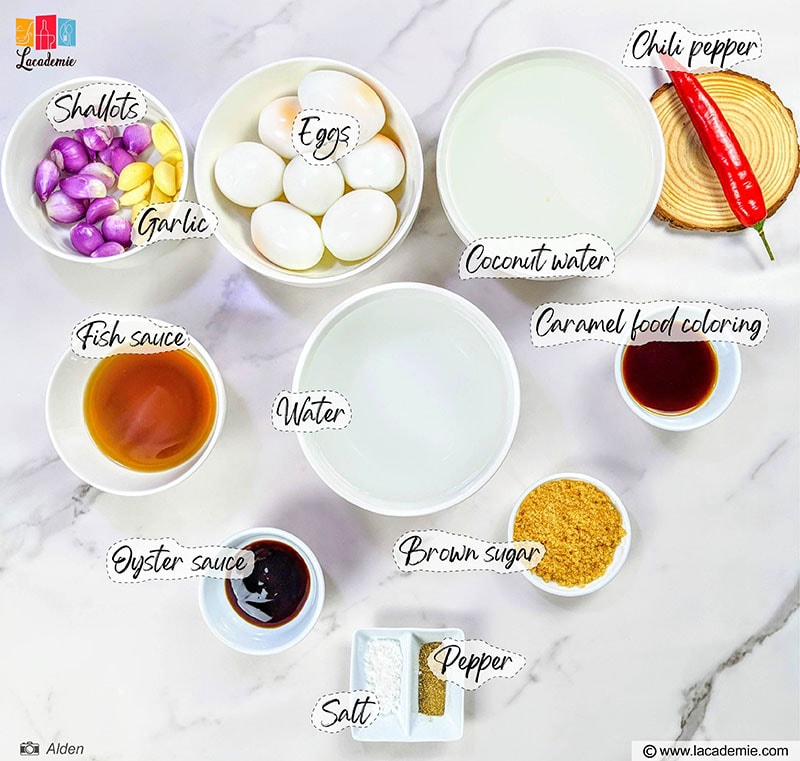
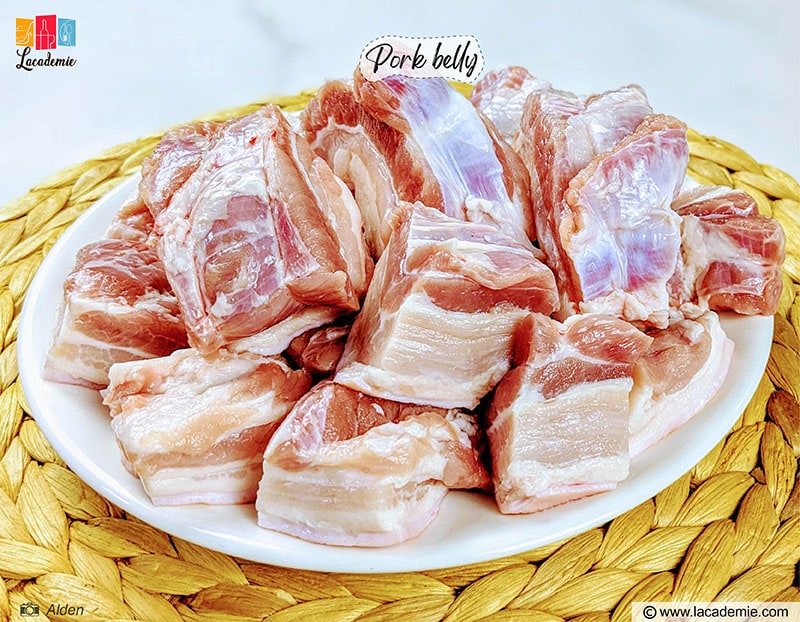
Let’s Start Cooking
Here’s the part that you’re waiting for. Let’s waste no more time and start making this delectable dish!
Step 1: Make The Caramel Food Coloring
If you don’t want to use store-bought products, you can easily make caramel food coloring at home. First, heat a saucepan on the stovetop over high heat. Next, add 4 tablespoons of sugar and cook until the sugar turns dark brown.
Add a small amount of water and bring the sugar-water mixture to a boil. Stir the mixture continuously to prevent it from burning and turning bitter. Once the mixture has thickened, turn off the heat.
Step 2: Marinate The Meat
Peel the garlic and shallots, then crush them in the mortar.
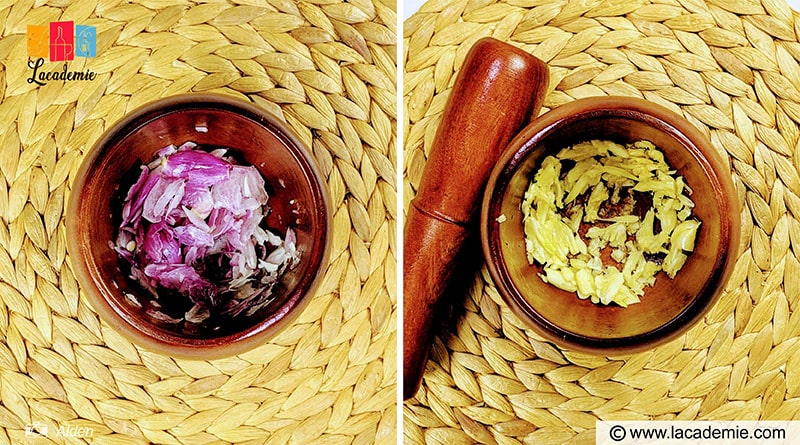
Place the pork belly into a bowl, then add 1 tablespoon of garlic, 1 tablespoon of shallots, 2 tablespoons sugar, 1 teaspoon salt, 2 teaspoons of pepper, 1 tablespoon of oyster sauce, and 1 tablespoon of caramel food coloring.
Mix well and marinate the meat for at least 30 minutes.
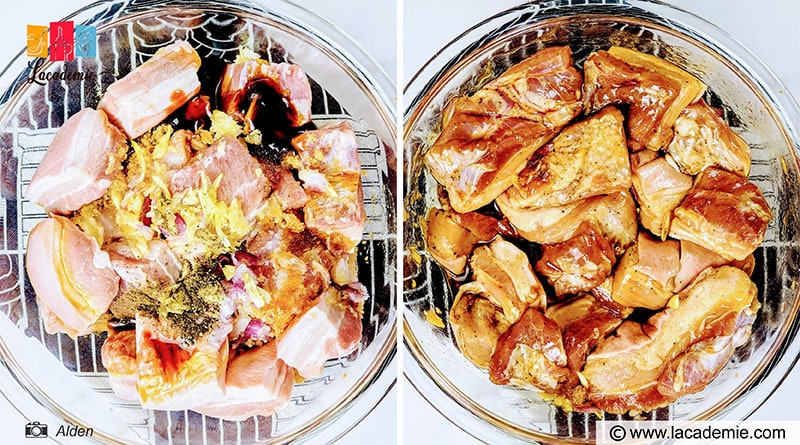
Step 3: Cook The Meat
Put the marinated pork into a pot and boil it gently. Next, add 5 tablespoons of fish sauce and 2 tablespoons of caramel food coloring.
Pour in 13.5 fluid ounces (about 400 milliliters) of coconut water. You should submerge the meat in the water in order to cook it evenly. Set the heat to low and simmer for 1 hour until the pork has absorbed all the spices and turned to a golden brown color. The broth should also have a nice color.
At this point, you can add fresh chili pepper to the pot if you prefer spicy food.
Note: Do not cover the pot while cooking to ensure a clear broth.
Once the coconut water thickens, pour in 11.8 fluid ounces (350 milliliters) of water. The water should be enough to slightly cover the surface of the meat. Continue cooking at low heat for about 45 minutes. You should set the heat lower than before so as not to dry out the broth and keep the meat tender.
After 45 minutes, add the eggs and simmer for another 10 minutes. Remember to submerge the eggs fully in the broth to infuse them with all the flavors. Flip the eggs after the 5-minute mark.
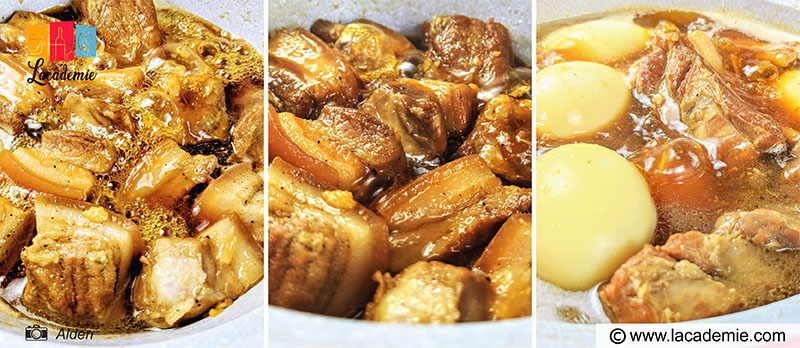
Additional Notes You Should Know
For the most authentic pot of Thit Kho Tau, don’t miss out on these extra notes.
- If you plan to cook in large quantities and store the dish for many days, don’t crush the onions and garlic, and use only a tiny amount of these spices. While onions and garlic bring an appealing aroma to the dish, they can cause the meat to spoil faster.
- An up-to-standard serving of Vietnamese caramelized pork belly should have a balanced sweet and savory taste. The meat is aromatic, tender, moist, and doesn’t fall apart.
- The caramelized sugar adds beautiful color to the dish and enhances its richness. Note that you should not cook the sugar for too long, as burned sugar will taste bitter.
- Store-bought food coloring is a suitable alternative if you don’t have the time to make your own version at home. However, most premade products have a very deep color, so remember to adjust the amount used accordingly.
- Ideally, you should marinate the pork belly in the fridge overnight.
- Although coconut water is great for adding flavor to the pork, too much of it can cause your dish to be overly sweet. Besides, cooking coconut water for too long can affect the color of the meat.
- You shouldn’t add both coconut water and water at once. Adding regular water after cooking your meat with coconut water allows you to adjust the taste to your liking. The meat will also be more tender and has a beautiful color.
- Always add the boiled eggs towards the end of cooking. Putting them in too early will result in hard and over-colored eggs.
Ideal Side Dishes And Storage
This dish is best enjoyed with a bowl of hot white rice or bread. It’s also a good idea to prepare some pickles or fresh vegetables on the side in case you find the braised pork a bit too fatty.
On the Tet holiday, the locals love pairing Thit Kho Tau with pickled bean sprouts and Banh Chung, a traditional treat made from sticky rice. Vietnamese people tend to make a large pot of this dish and enjoy it for days.
To store this treat, you’ll first need to wait for it to cool completely. After that, put the braised pork in a sealable container and refrigerate for up to 3 days. Before serving, simply cook the leftovers on a stove for a few minutes or pop them in a microwave.
Vietnamese Caramelized Pork For The Win!
Tender, aromatic, and flavorful, Thit Kho Tau is the ultimate dish for any occasion. The Vietnamese believe the more time you re-cook the pork, the tastier it becomes, and I agree with them wholeheartedly!
If you haven’t had Vietnamese caramelized pork before, I highly recommend you try it today. After that, please leave a comment to share with me your thoughts on this delicacy. For more delectable recipes like this one, like and share this post with the people around you!
Nutrition Facts
8 servings per container
- Amount Per ServingCalories507
- % Daily Value *
- Total Fat
33.5g
51%
- Saturated Fat 16.5g 80%
- Cholesterol 163mg 55%
- Sodium 1289mg 54%
- Potassium 234mg 7%
- Total Carbohydrate
10.3g
4%
- Dietary Fiber 0.7g 0%
- Sugars 8.8g
- Protein 41.6g 82%
- Calcium 47%
- Iron 1%
- Vitamin D 15%
* The % Daily Value tells you how much a nutrient in a serving of food contributes to a daily diet. 2,000 calories a day is used for general nutrition advice.

